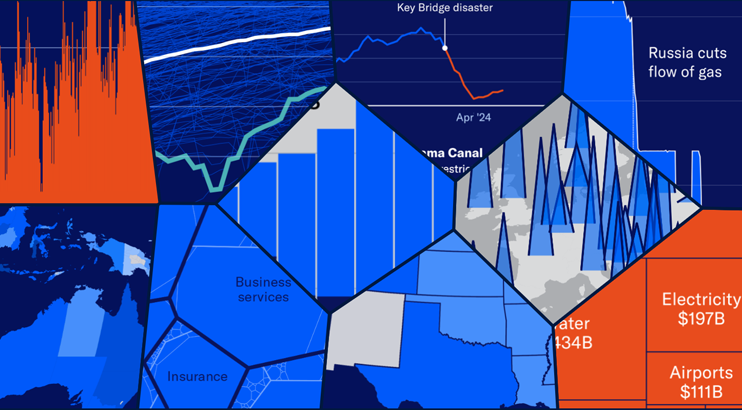As the U.S. financial landscape continues to evolve in 2025, lenders are facing new and increasingly complex risks that challenge traditional lending models. Economic shifts, technological disruptions, regulatory reforms, and changing borrower behavior have all contributed to a dynamic risk environment.
Understanding these trends is essential for lenders, financial institutions, and mortgage professionals seeking to adapt, stay compliant, and remain competitive. In this blog, we explore the top lending risk trends shaping the U.S. market in 2025.
The Federal Reserve’s fluctuating rate policies continue to impact borrower affordability and loan demand. While interest rates have stabilized somewhat in 2025, many borrowers remain rate-sensitive, leading to:
- Lower mortgage origination volumes
- Increased demand for adjustable-rate mortgages (ARMs)
- Prepayment risk in refinancing portfolios
Lenders must manage interest rate risk more carefully, especially when pricing fixed vs. variable rate loans.
U.S. household debt hit new highs in 2025, driven by:
- Credit card balances
- Auto loans
- Student loan repayments resuming
- Rising cost of living
This growing debt burden increases the risk of delinquencies and defaults, particularly among first-time homebuyers and subprime borrowers.
Higher credit risk across multiple loan types; lenders need enhanced underwriting and borrower segmentation.
Lenders are increasingly adopting AI-powered underwriting tools to assess borrower risk. These models use alternative data like:
- Rental payment history
- Utility payments
- Bank transaction behavior
While this improves access to credit, it raises new concerns around algorithmic bias, transparency, and regulatory scrutiny.
Greater focus on model risk and the need for explainable AI in compliance with fair lending laws (ECOA, FHA).
In 2025, financial regulators like the FDIC and OCC are requiring banks to assess climate-related financial risks, including:
- Flood-prone property exposure
- Wildfire zones
- Insurance availability and cost
Mortgage lenders, in particular, are factoring climate risk into property valuations, loan pricing, and portfolio diversification.
Growing need for geospatial risk analysis and climate resilience metrics in mortgage portfolios.
As lending becomes more digitized, cyber risk and fraud continue to rise. Key concerns include:
- Synthetic identity fraud
- Account takeovers
- Ransomware attacks on loan origination systems
Fintechs and smaller lenders without strong IT infrastructure are particularly vulnerable.
Operational risk mitigation is now a top priority, requiring stronger authentication, fraud detection tools, and staff training.
2025 has seen aggressive regulatory action from the CFPB, HUD, and DOJ, especially in areas like:
- Disparate impact under ECOA and FHA
- TRID and TILA disclosure violations
- HMDA reporting inconsistencies
Lenders must now demonstrate real-time compliance and show proactive monitoring of risk and bias.
Increased compliance risk and need for dynamic monitoring tools and automated reporting systems.
As conventional loan volumes slow, lenders are expanding into non-qualified mortgage (non-QM) products and loans for:
- Gig workers
- Self-employed borrowers
- Foreign nationals
While profitable, these loans carry higher credit, liquidity, and reputational risk if not carefully underwritten.
Need for manual underwriting controls, risk-based pricing, and layered risk mitigation strategies.
With real estate markets cooling in some metros and heating up in others, valuation accuracy is under scrutiny. Automated Valuation Models (AVMs) are being used more frequently, but:
- They struggle in low-inventory or rapidly shifting markets
- Overvaluations lead to loan losses in downturns
Lenders must strengthen appraisal review processes and consider local market volatility in risk scoring.
Economic growth remains uneven across the U.S., with regional slowdowns in industries like tech, logistics, and manufacturing. Lenders exposed to one sector or region are at higher risk.
Increased concentration risk in loan portfolios; emphasis on geographic diversification and economic sensitivity analysis.
Environmental, Social, and Governance (ESG) principles are being integrated into lending decisions, particularly at large institutions. This includes:
- Lending to underserved communities
- Affordable housing finance
- Green mortgage programs
Failure to adopt ESG practices may lead to reputational risk, investor pushback, and regulatory scrutiny.
In 2025, the U.S. lending landscape is defined by fast-moving risks—from digital disruption and demographic shifts to climate and compliance pressures. Lenders that succeed will be those that:
- Proactively identify and quantify risks
- Embrace technology with transparency
- Maintain rigorous compliance and controls
- Evolve underwriting standards for a changing borrower profile
Stay ahead of lending risk trends, compliance tips, and industry insights at loanandmortgage.us—your trusted resource for navigating the future of U.S. lending.

